Abstract
Using a new approach, we estimated the physical strength of the cell envelopes of three species of gram-negative, gas vacuolate bacteria (Microcyclus aquaticus, Prosthecomicrobium pneumaticum, and Meniscus glaucopis). Populations of cells were slowly (0.5 to 2.9 h) saturated with argon, nitrogen, or helium to final pressures up to 100 atm (10, 132 kPa). The gas phases of the vesicles remained intact and, upon rapid (1 to 2 s) decompression to atmospheric pressure, expanded and ruptured the cells; loss of colony-forming units was used as an index of rupture. Because the cell envelope is the cellular component most likely to resist the expanding intracellular gas phase, its strength can be estimated from the minimum gas pressures that produce rupture. The viable counts indicated that these minimum pressures were between 25 and 50 atm; the majority of the cell envelopes were ruptured at pressures between 50 and 100 atm. Cells in which the gas vesicles were collapsed and the gas phases were effectively dissolved by rapid compression tolerated decompression from much higher gas saturations. Cells that do not normally possess gas vesicles (Escherichia coli) or that had been prevented from forming them by addition of L-lysine to the medium (M. aquaticus) were not harmed by decompression from gas saturation pressures up to 300 atm.
Full text
PDF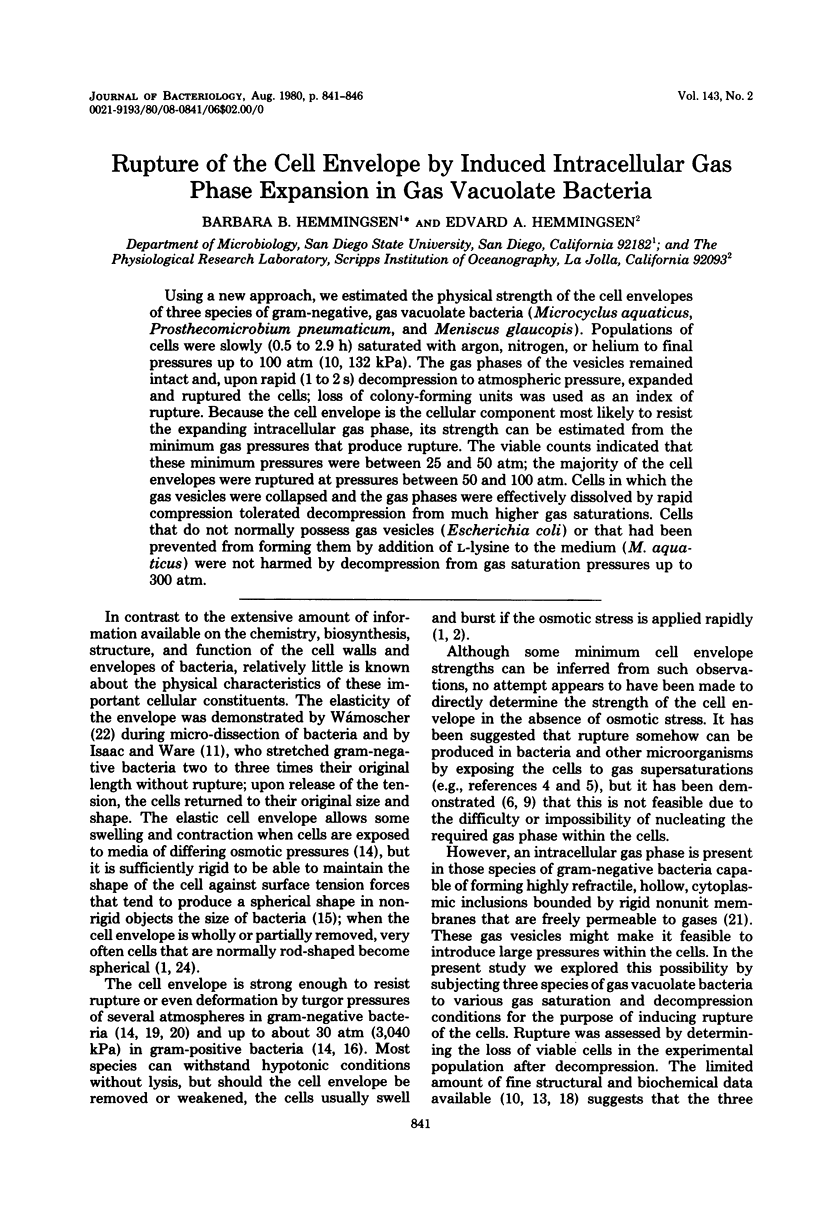
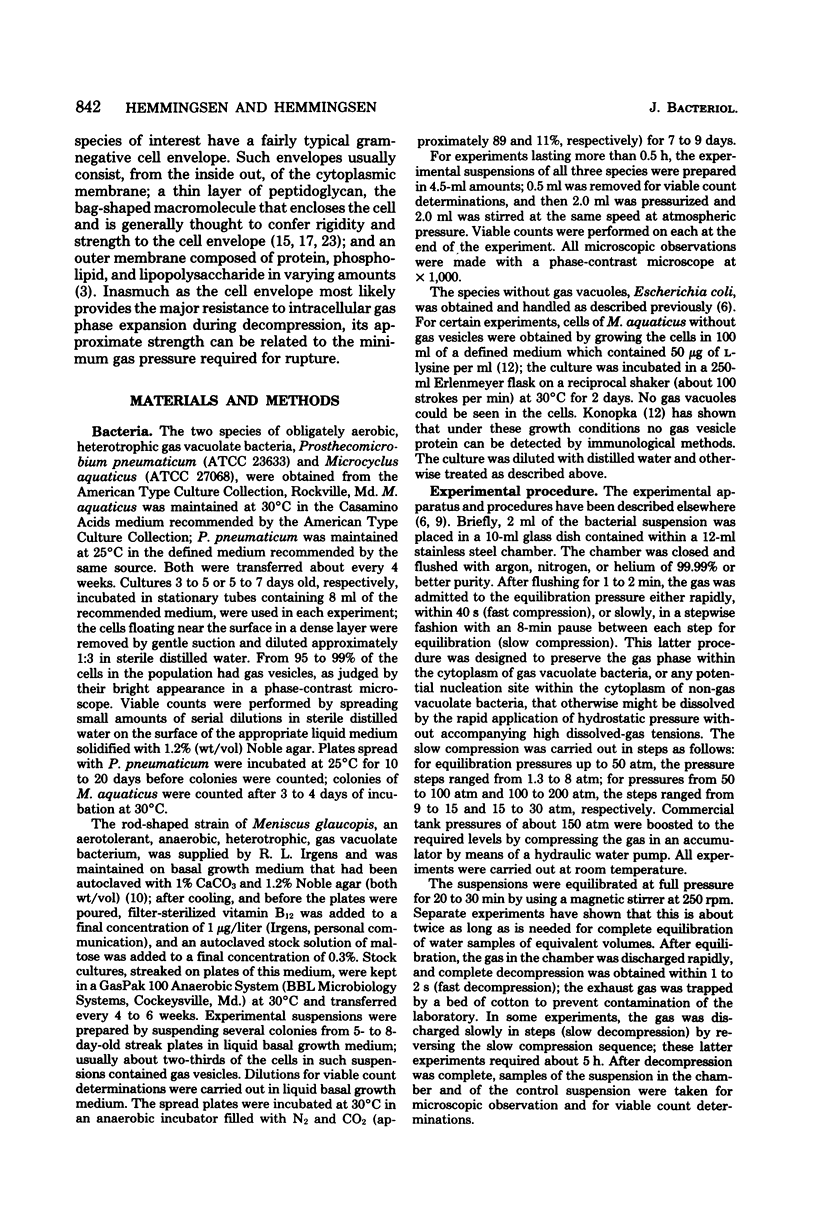
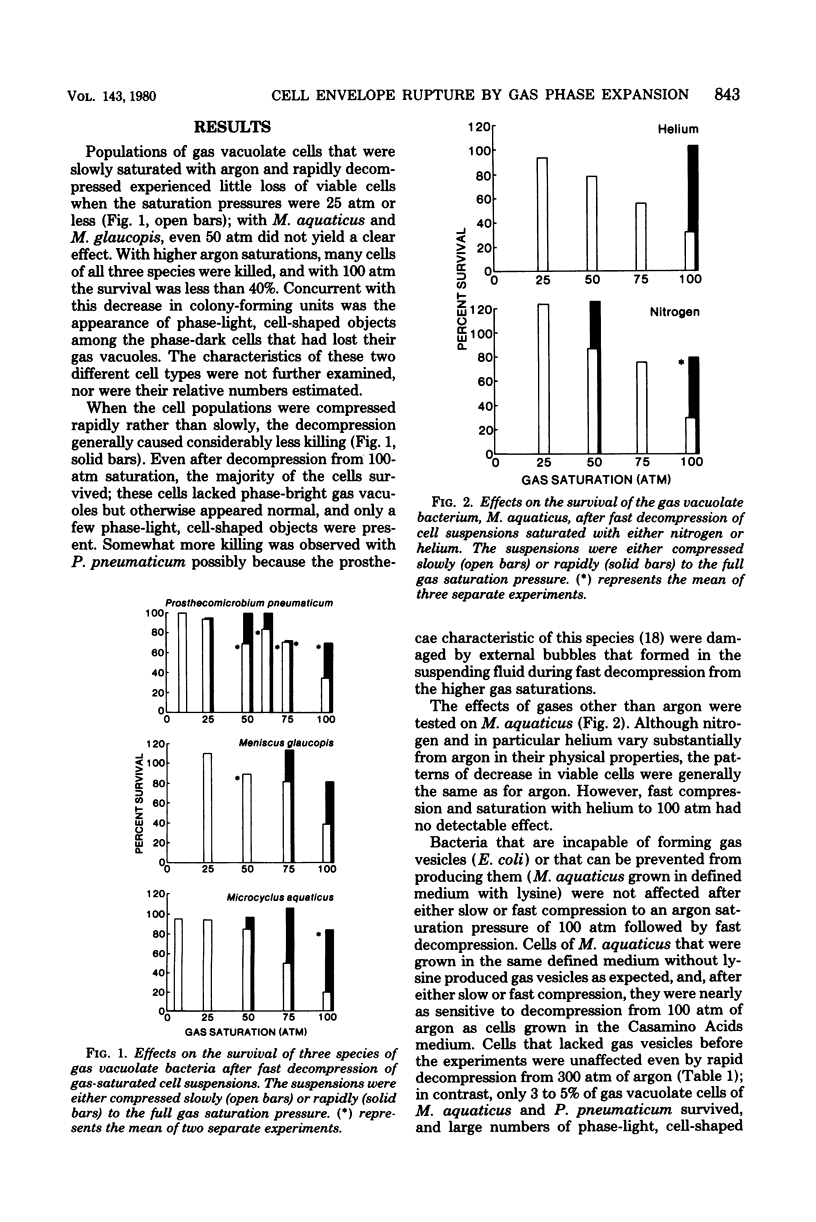
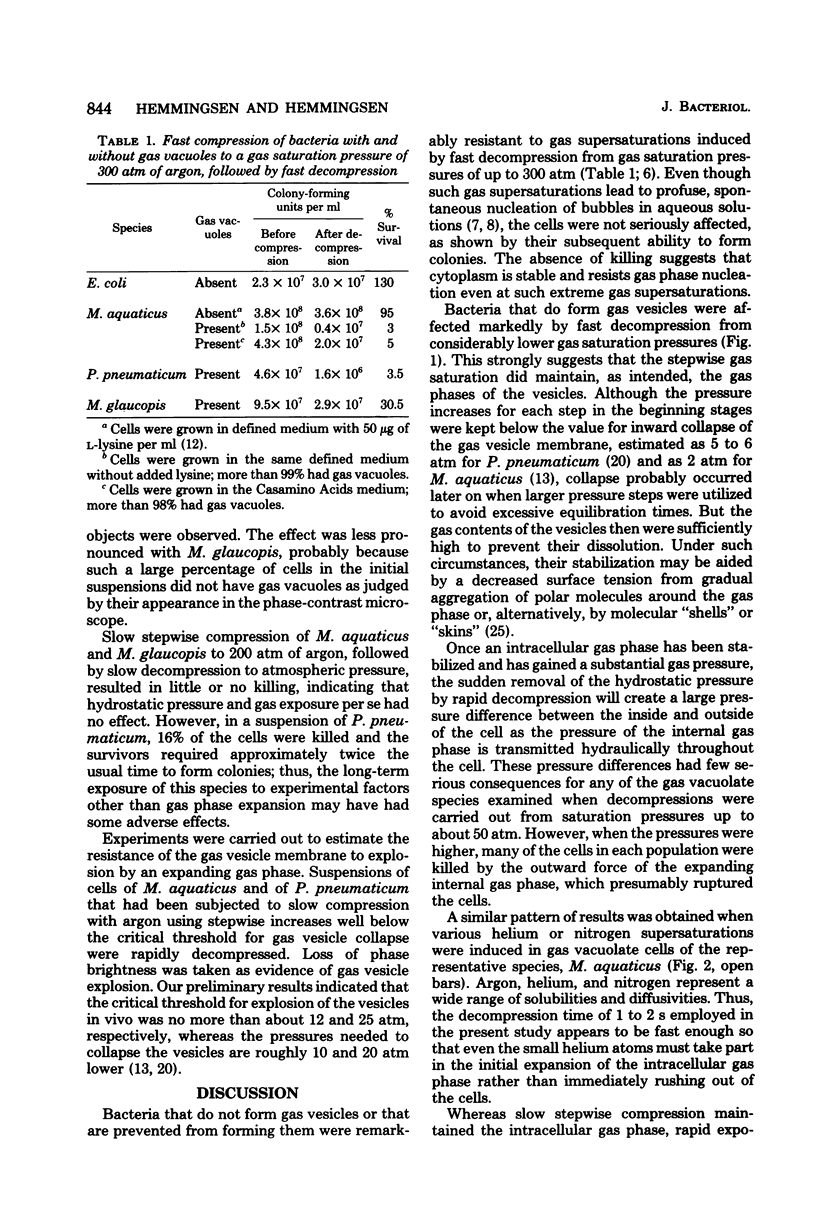
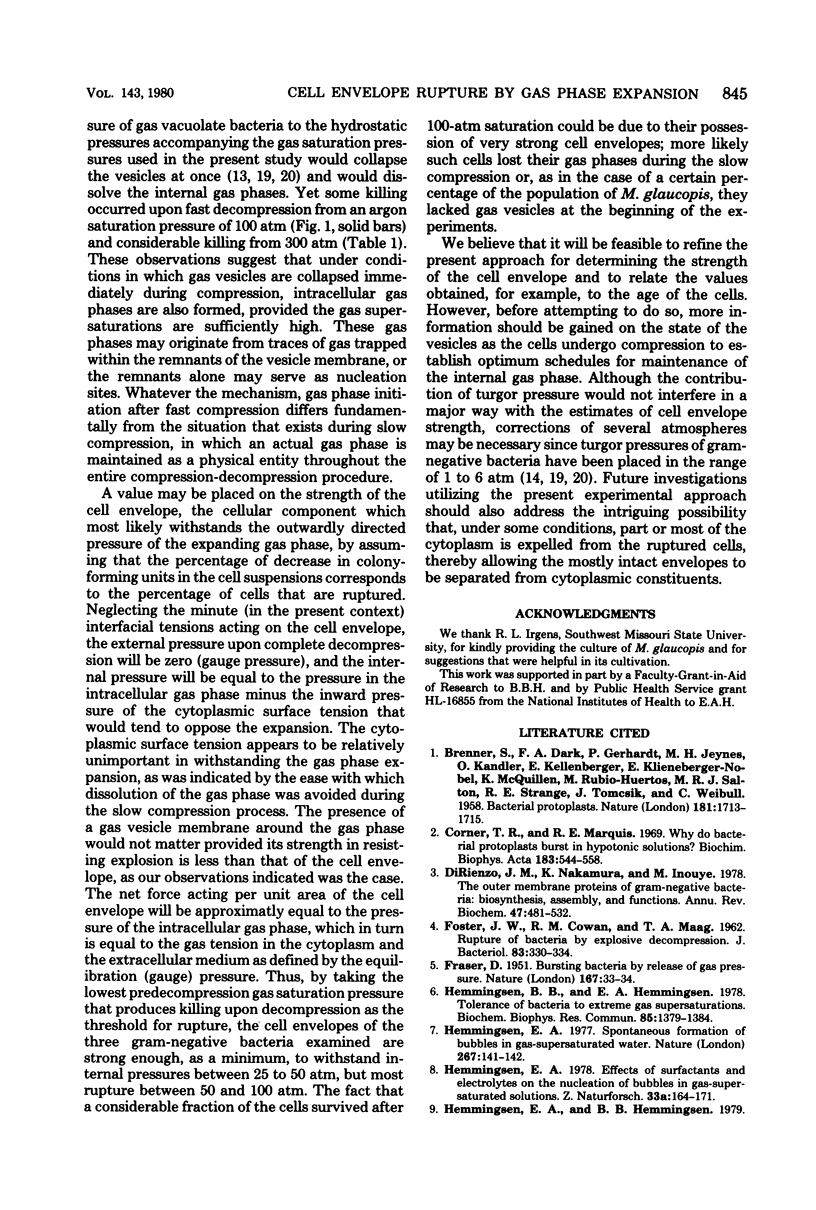
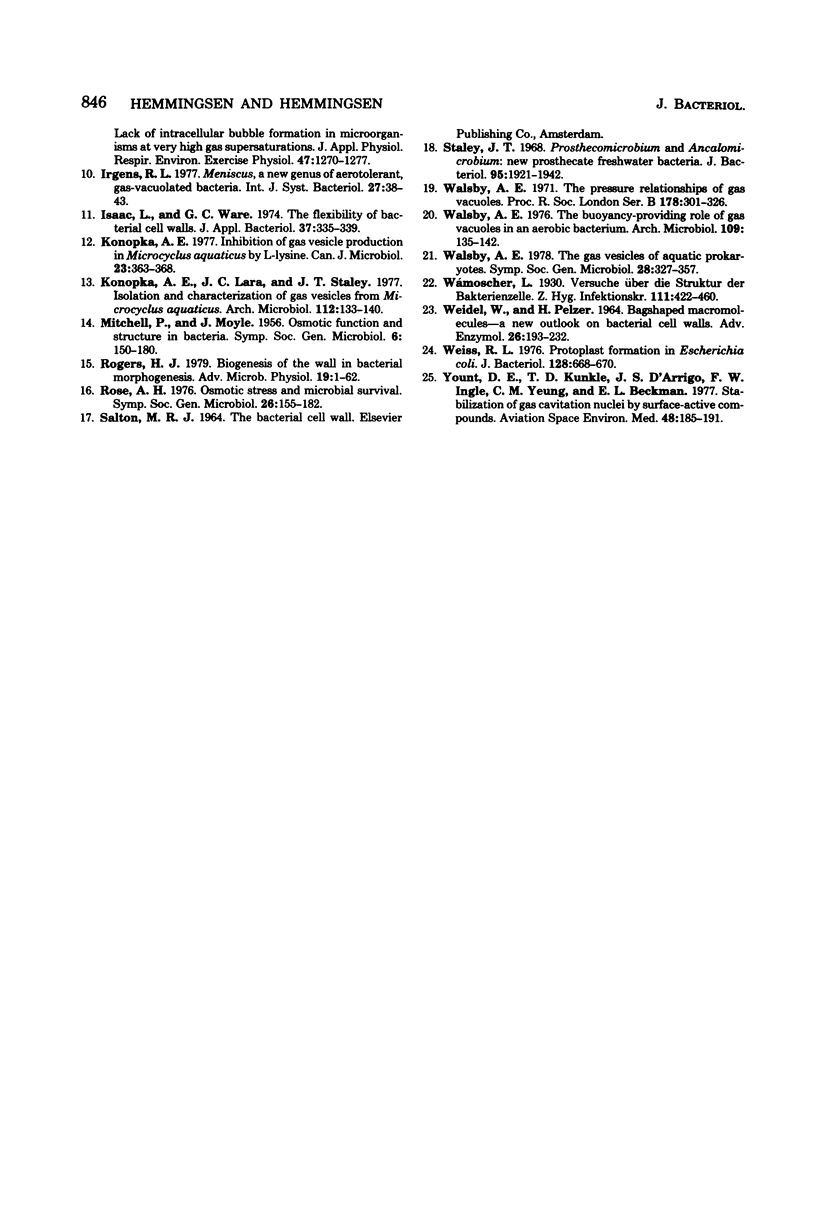
Selected References
These references are in PubMed. This may not be the complete list of references from this article.
- Corner T. R., Marquis R. E. Why do bacterial protoplasts burst in hypotonic solutions? Biochim Biophys Acta. 1969;183(3):544–558. doi: 10.1016/0005-2736(69)90168-0. [DOI] [PubMed] [Google Scholar]
- DiRienzo J. M., Nakamura K., Inouye M. The outer membrane proteins of Gram-negative bacteria: biosynthesis, assembly, and functions. Annu Rev Biochem. 1978;47:481–532. doi: 10.1146/annurev.bi.47.070178.002405. [DOI] [PubMed] [Google Scholar]
- FOSTER J. W., COWAN R. M., MAAG T. A. Rupture of bacteria by explosive decompression. J Bacteriol. 1962 Feb;83:330–334. doi: 10.1128/jb.83.2.330-334.1962. [DOI] [PMC free article] [PubMed] [Google Scholar]
- FRASER D. Bursting bacteria by release of gas pressure. Nature. 1951 Jan 6;167(4236):33–34. doi: 10.1038/167033b0. [DOI] [PubMed] [Google Scholar]
- Hemmingsen B. B., Hemmingsen E. A. Tolerance of bacteria to extreme gas supersaturations. Biochem Biophys Res Commun. 1978 Dec 29;85(4):1379–1384. doi: 10.1016/0006-291x(78)91156-7. [DOI] [PubMed] [Google Scholar]
- Hemmingsen E. A., Hemmingsen B. B. Lack of intracellular bubble formation in microorganisms at very high gas supersaturations. J Appl Physiol Respir Environ Exerc Physiol. 1979 Dec;47(6):1270–1277. doi: 10.1152/jappl.1979.47.6.1270. [DOI] [PubMed] [Google Scholar]
- Hemmingsen E. A. Spontaneous formation of bubbles in gas-supersaturated water. Nature. 1977 May 12;267(5607):141–142. doi: 10.1038/267141a0. [DOI] [PubMed] [Google Scholar]
- Isaac L., Ware G. C. The flexibility of bacterial cell walls. J Appl Bacteriol. 1974 Sep;37(3):335–339. doi: 10.1111/j.1365-2672.1974.tb00448.x. [DOI] [PubMed] [Google Scholar]
- Konopka A. E. Inhibition of gas vesicle production in Microcyclus aquaticus by L-lysine. Can J Microbiol. 1977 Apr;23(4):363–368. doi: 10.1139/m77-054. [DOI] [PubMed] [Google Scholar]
- Konopka A. E., Lara J. C., Staley J. T. Isolation and characterization of gas vesicles from Microcyclus aquaticus. Arch Microbiol. 1977 Mar 1;112(2):133–140. doi: 10.1007/BF00429325. [DOI] [PubMed] [Google Scholar]
- Rogers H. J. Biogenesis of the wall in bacterial morphogenesis. Adv Microb Physiol. 1979;19:1–62. doi: 10.1016/s0065-2911(08)60197-6. [DOI] [PubMed] [Google Scholar]
- Staley J. T. Prosthecomicrobium and Ancalomicrobium: new prosthecate freshwater bacteria. J Bacteriol. 1968 May;95(5):1921–1942. doi: 10.1128/jb.95.5.1921-1942.1968. [DOI] [PMC free article] [PubMed] [Google Scholar]
- WEIDEL W., PELZER H. BAGSHAPED MACROMOLECULES--A NEW OUTLOOK ON BACTERIAL CELL WALLS. Adv Enzymol Relat Areas Mol Biol. 1964;26:193–232. doi: 10.1002/9780470122716.ch5. [DOI] [PubMed] [Google Scholar]
- Weiss R. L. Protoplast formation in Escherichia coli. J Bacteriol. 1976 Nov;128(2):668–670. doi: 10.1128/jb.128.2.668-670.1976. [DOI] [PMC free article] [PubMed] [Google Scholar]
- Yount D. E., Kunkle T. D., D'Arrigo J. S., Ingle F. W., Yeung C. M., Beckman E. L. Stabilization of gas cavitation nuclei by surface-active compounds. Aviat Space Environ Med. 1977 Mar;48(3):185–189. [PubMed] [Google Scholar]


